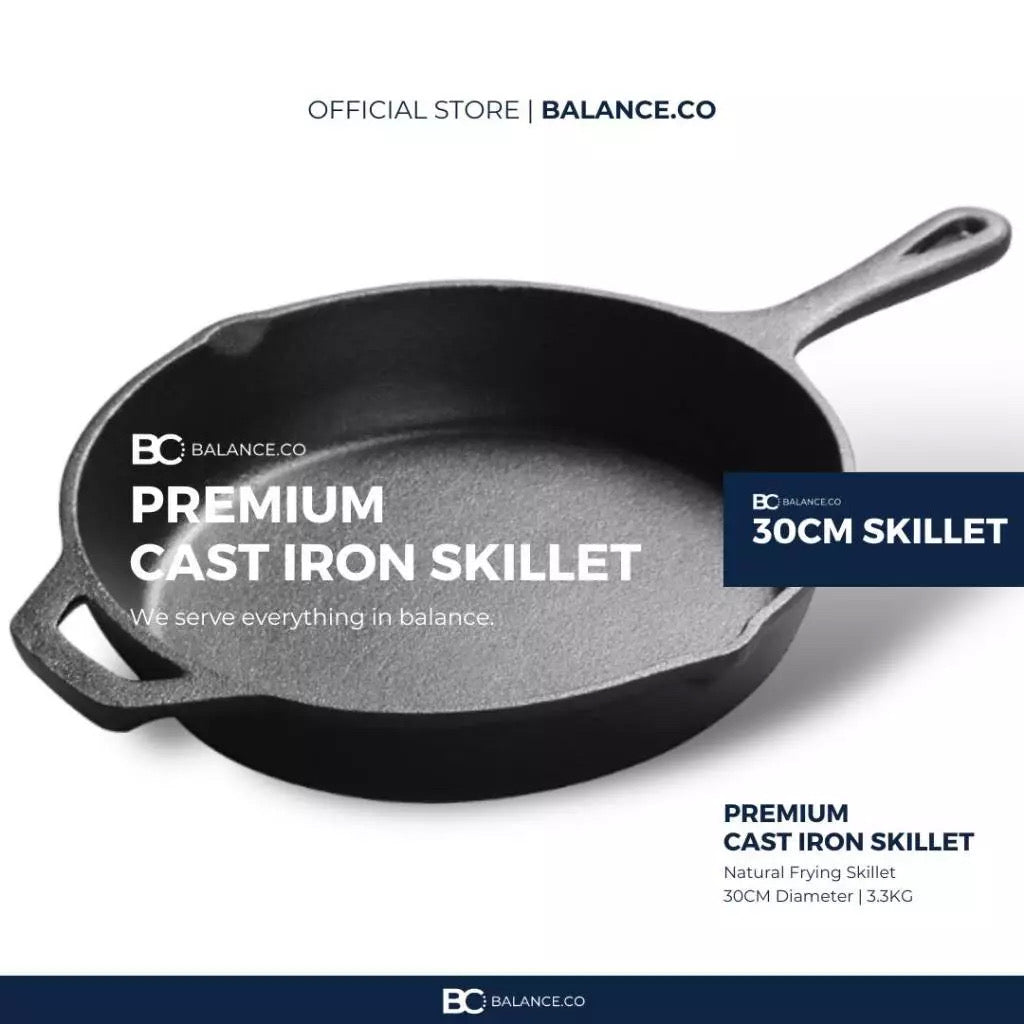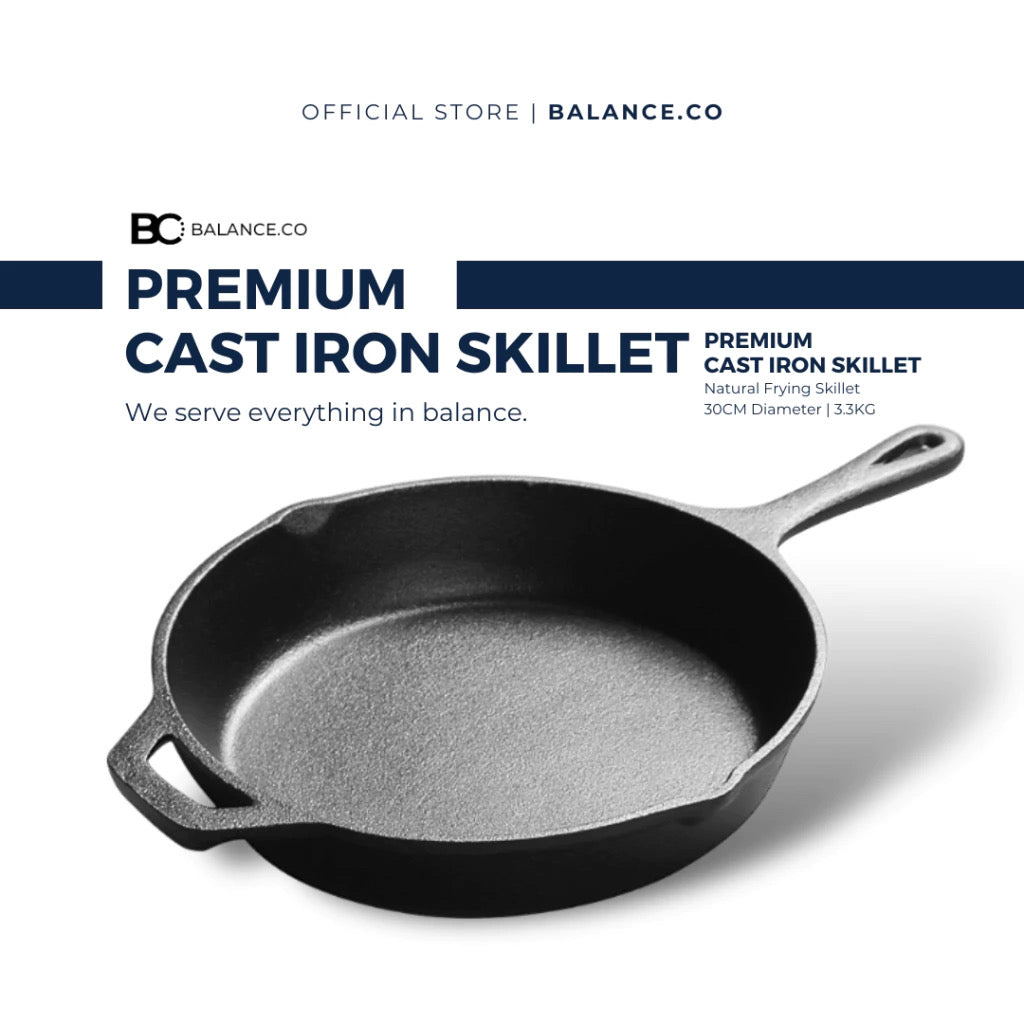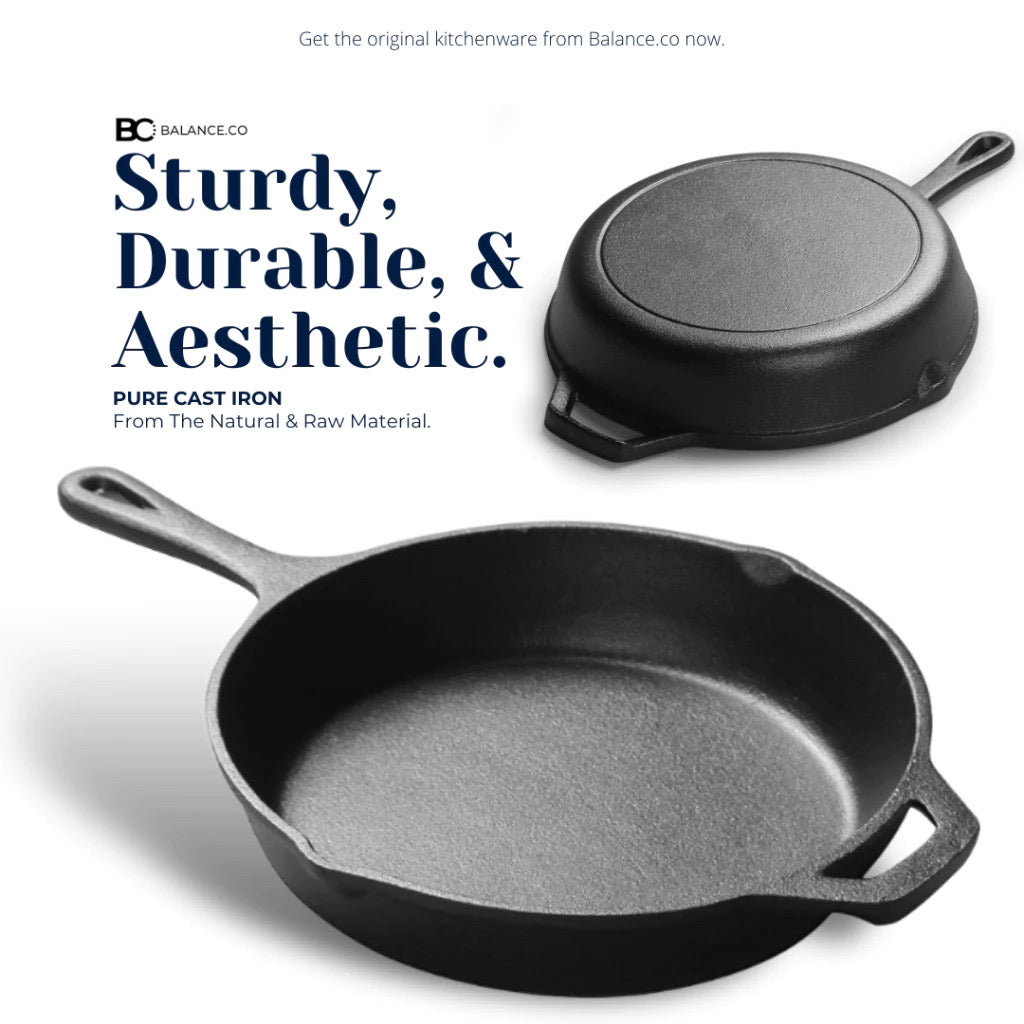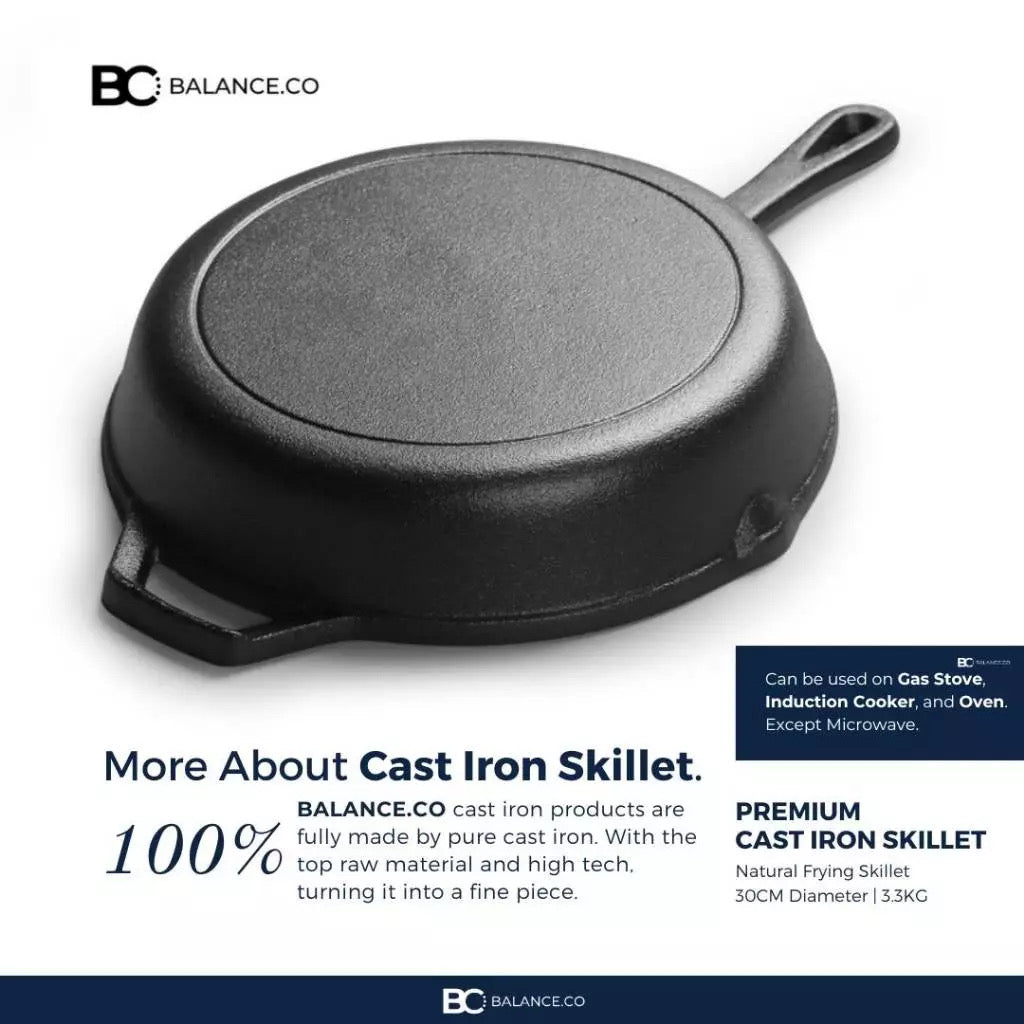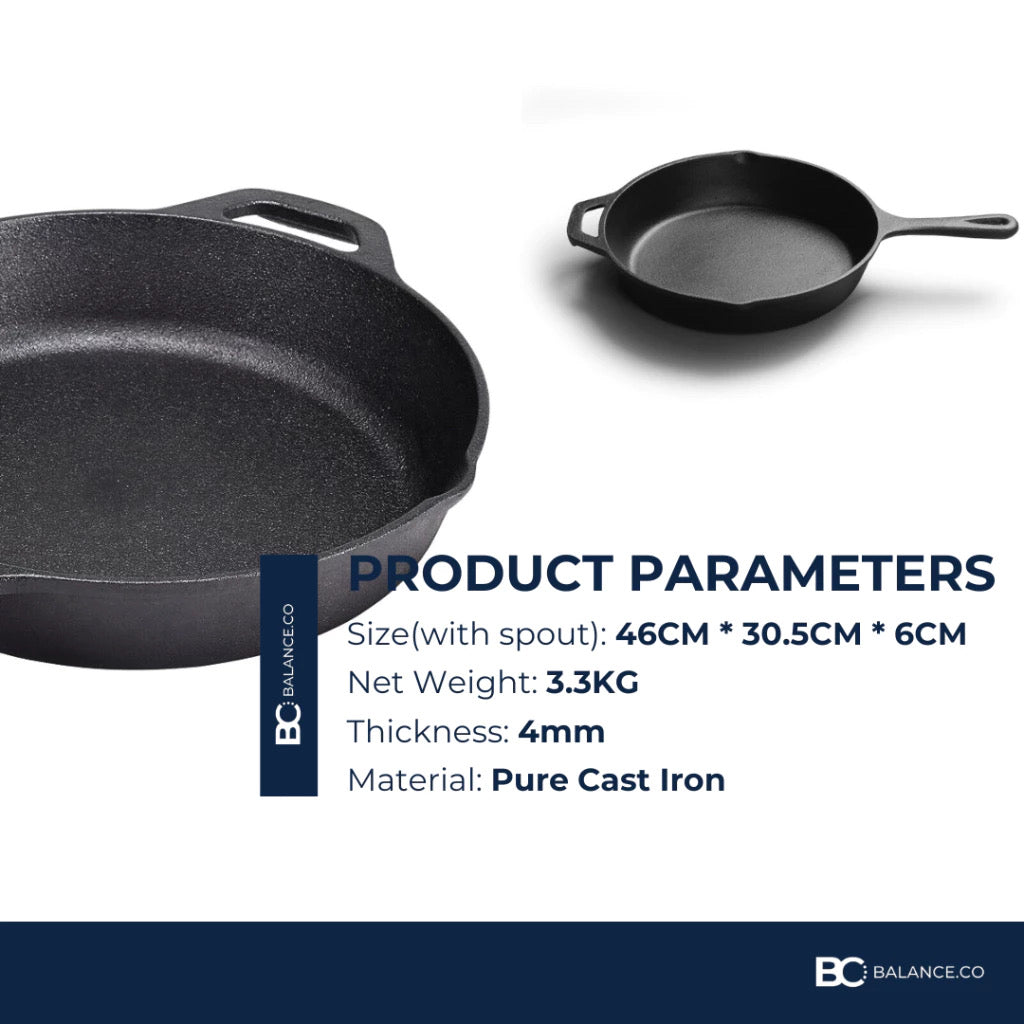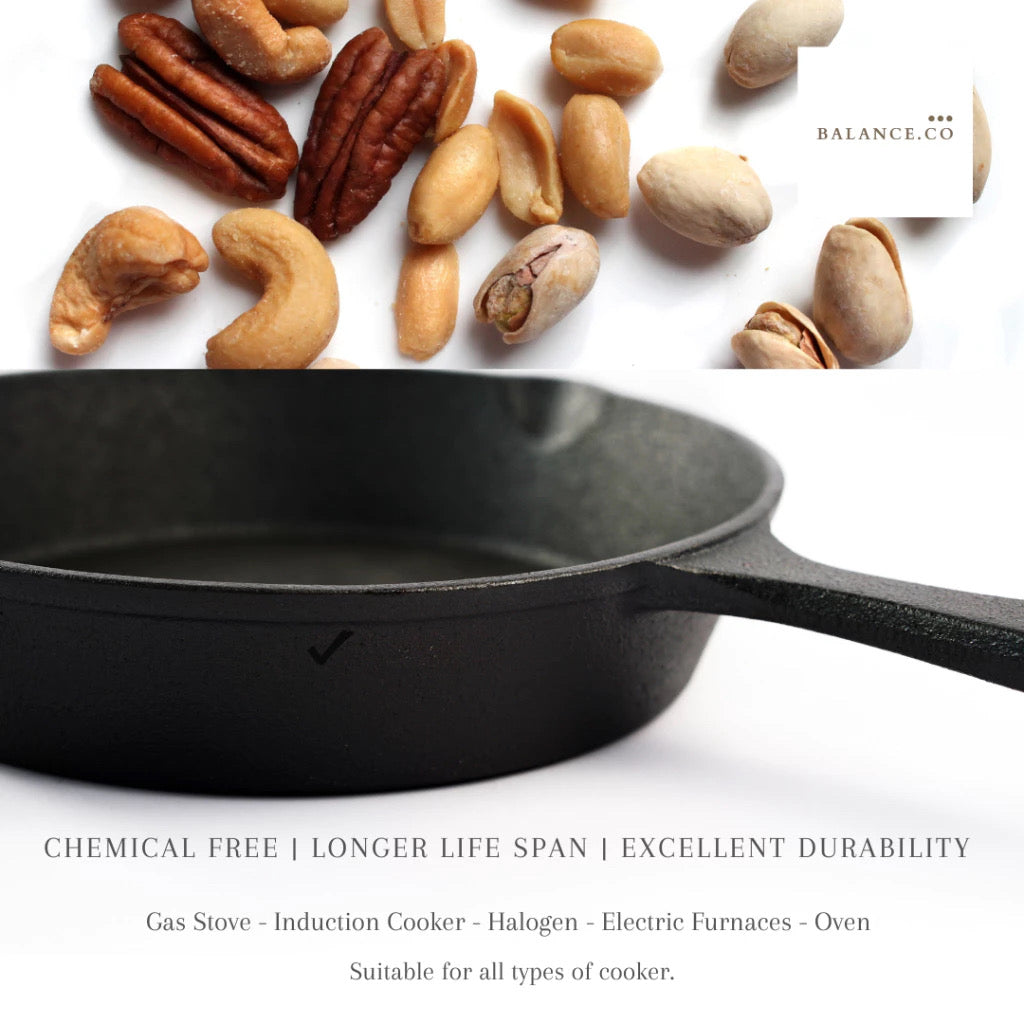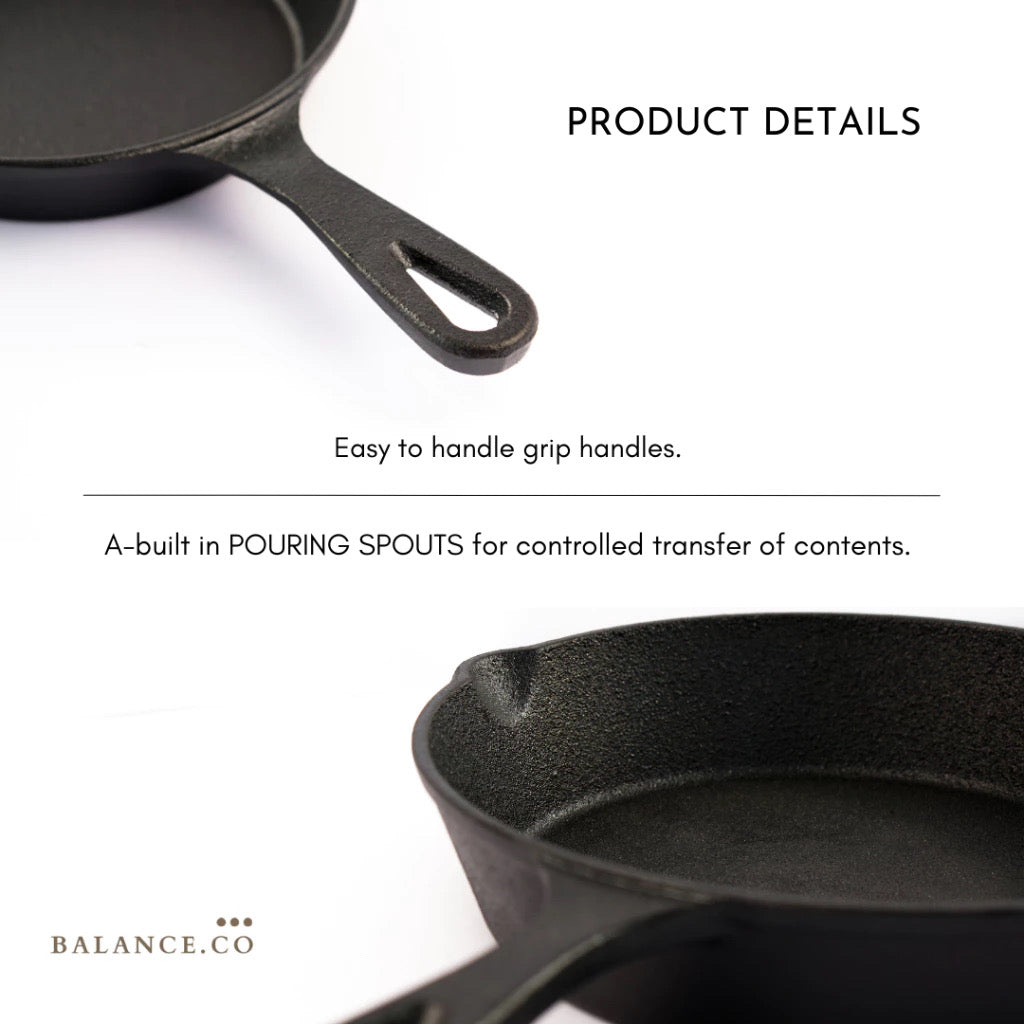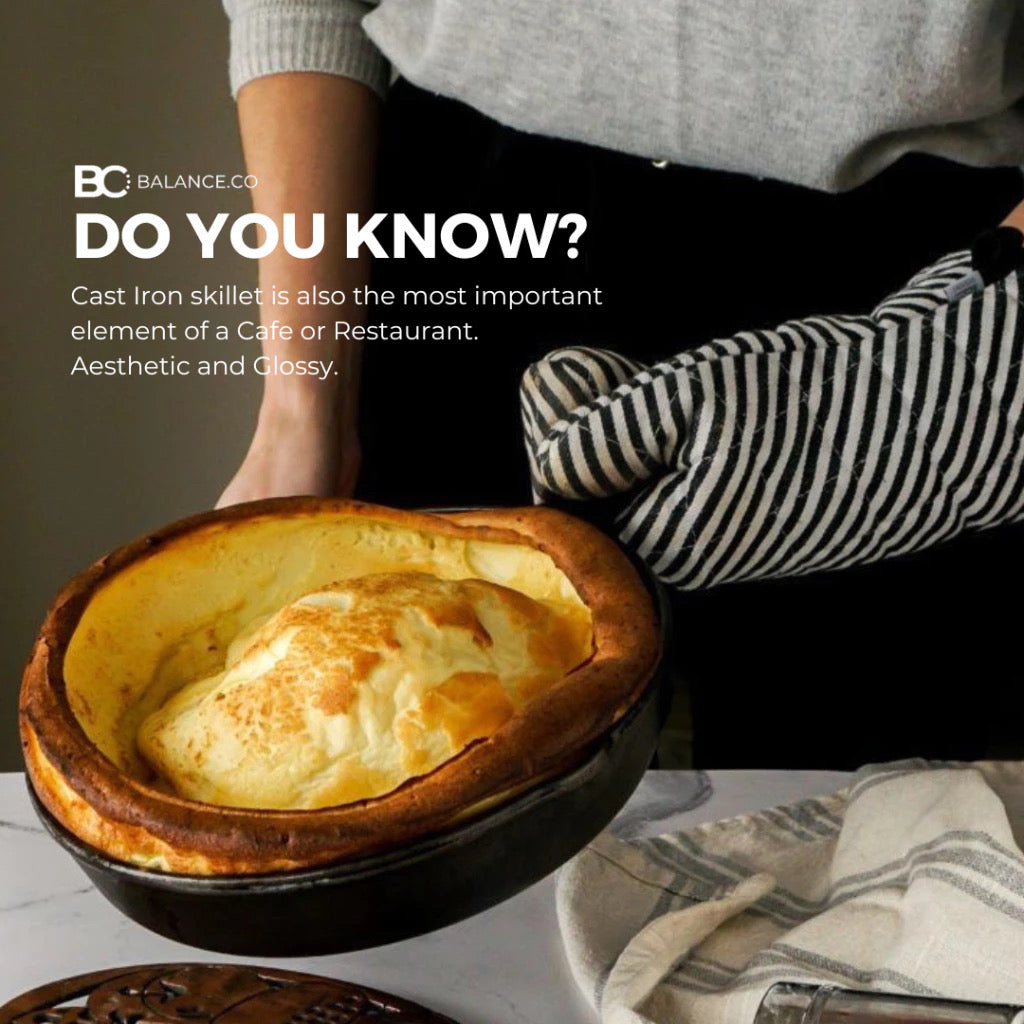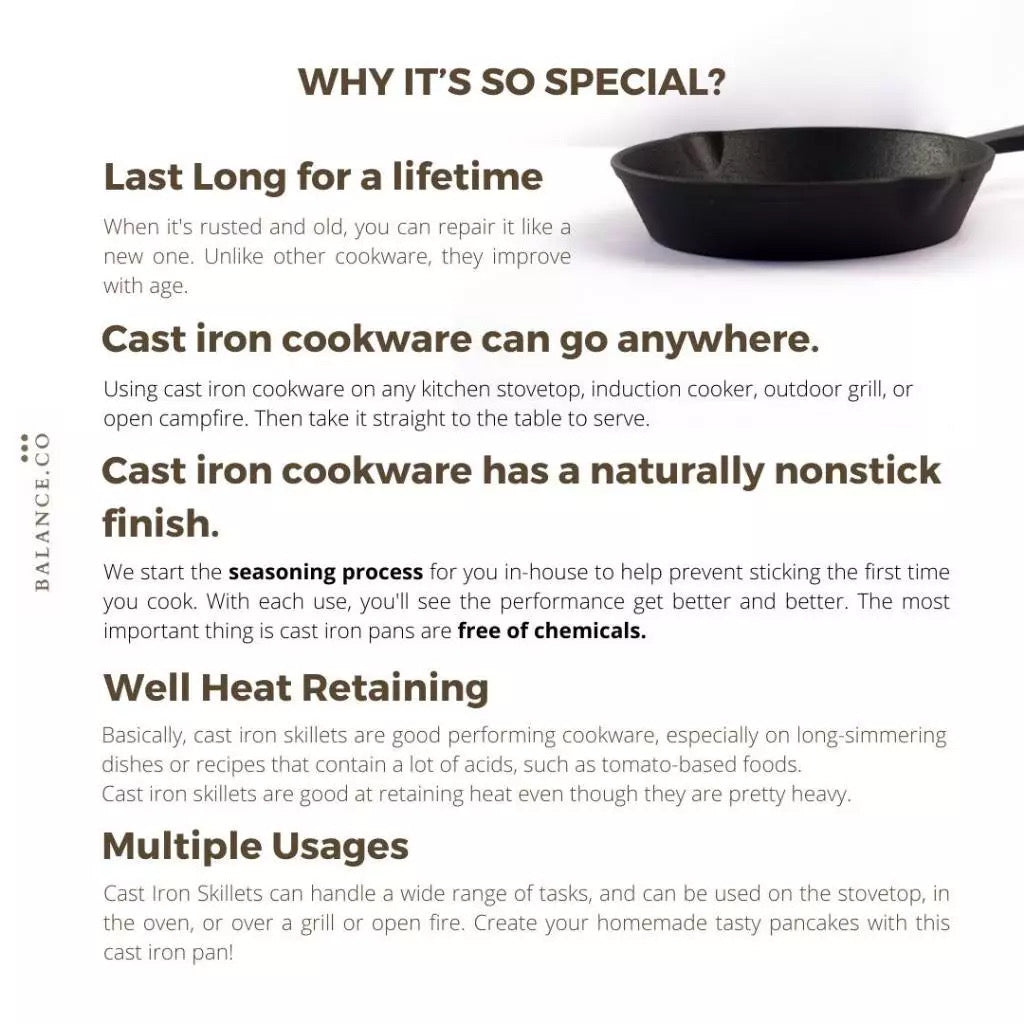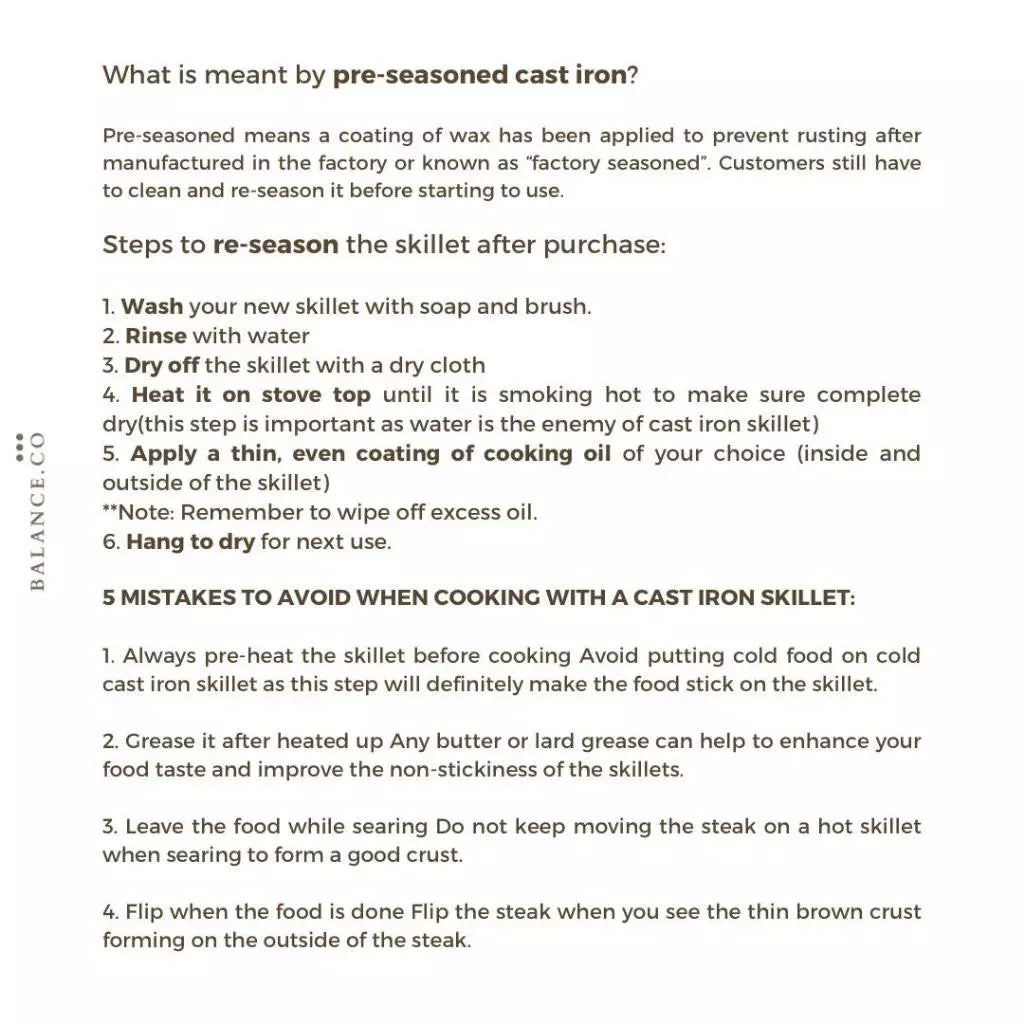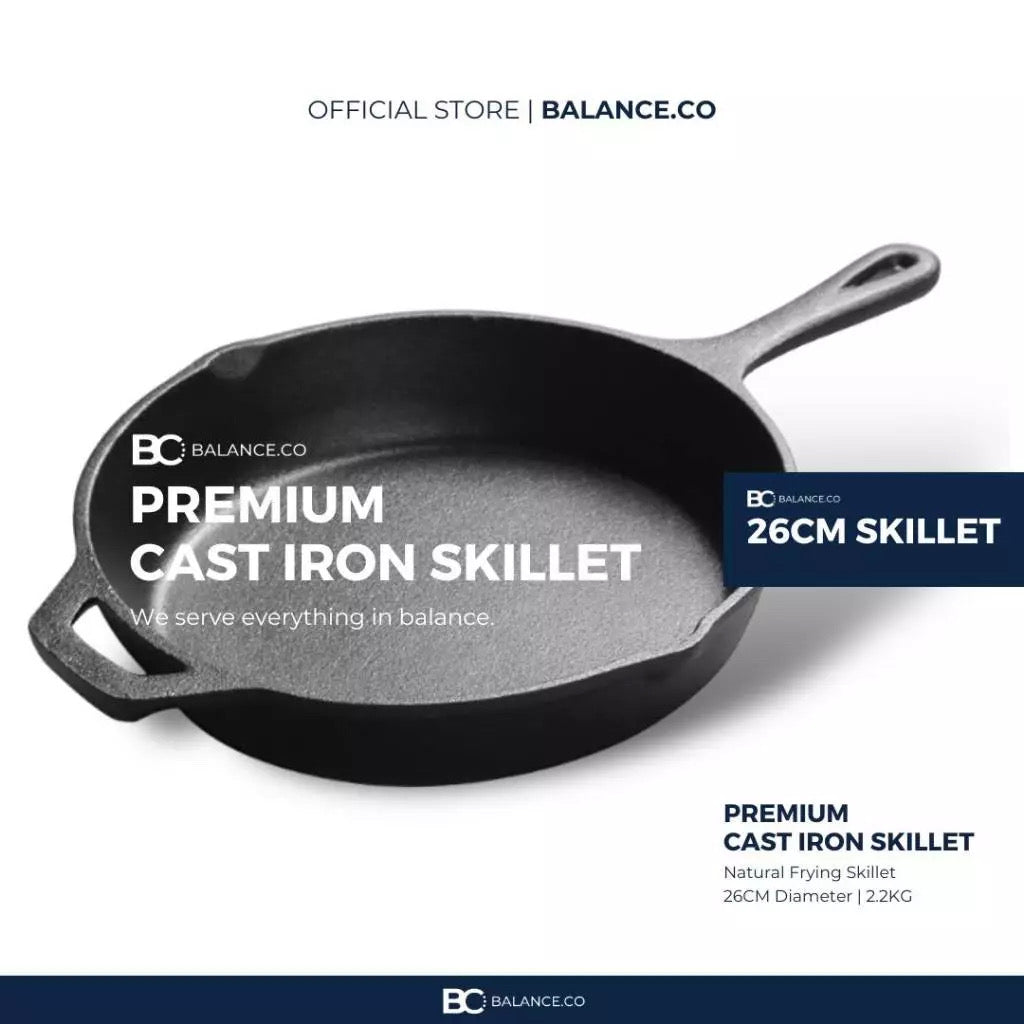Balance.co
30CM Premium Pre-Seasoned Cast Iron Skillets
30CM Premium Pre-Seasoned Cast Iron Skillets
Couldn't load pickup availability
Product Name: Premium Cast Iron Skillet
- Weight: 3.3 kg
- Dimensions (with spout): 46 cm (L) x 30.5 cm (W) x 5.7 cm (H)
- Thickness: 4 mm
- Handle Length: 13 cm
Packaging:
- Type: Box
- Packaging Weight: 3.35 kg
- Packaging Dimensions: 45 cm (L) x 31 cm (W) x 7.5 cm (H)
Compatible Stoves & Hobs:
- Gas, Induction Cooker, Ceramic, Electric Plate, Oven, and Gas on Glass
(Note: Not suitable for microwave or dishwasher use.)
What's in the Box:
- 1 x 30 cm Cast Iron Round Skillet
What is Pre-seasoned Cast Iron?
Pre-seasoned cast iron means that a protective wax coating has been applied during manufacturing to prevent rust. This is known as "factory seasoning." However, customers should clean and re-season the skillet before first use to enhance its non-stick performance.
Steps to Re-season the Skillet After Purchase:
- Wash the new skillet with soap and a brush to remove any factory residue.
- Rinse thoroughly with water.
- Dry the skillet completely with a dry cloth.
- Heat it on the stovetop until it's smoking hot to ensure it’s fully dry.
Important: Water is the enemy of cast iron, so ensure no moisture remains. - Apply a thin, even layer of cooking oil (inside and outside).
Tip: Wipe off excess oil to avoid a sticky finish. - Hang or store it to dry for future use.
4 Mistakes to Avoid When Cooking with a Cast Iron Skillet:
-
Not Preheating the Skillet:
Always preheat the skillet before cooking. Cold food on a cold skillet will stick. -
Skipping the Grease:
After the skillet is heated, add butter or lard to enhance flavor and improve the non-stick surface. -
Moving the Food Too Often While Searing:
Allow the food to sear undisturbed to form a good crust. Avoid constant movement. -
Flipping the Food Too Early:
Flip the steak only when a thin, brown crust has formed for the perfect sear.
How to Clean a Cast Iron Skillet After Cooking
Important: Do not use soap, steel wool, or put it in the dishwasher.
Why? Soap removes the skillet's seasoning (the non-stick layer), and steel wool can scratch the surface, making it rust.
But if you really want to use soap or steel wool:
If you decide to use soap or steel wool, you’ll need to re-season the skillet afterward. Just rub a thin layer of oil all over the skillet (inside and outside), then heat it on the stove or in the oven until the oil forms a protective layer.
- Immediately after cooking, pour hot water into the hot skillet.
- Gently scrub the skillet with a sponge or stiff nylon brush (use tongs to avoid burns).
- Rinse with hot water.
- Sprinkle some salt in the pan and add a little hot water.
- Use a wooden spatula to scrape off any tough stains.
- Rinse thoroughly with water.
- Dry the skillet completely with a towel, then heat it on low on the stovetop.
- Apply a thin layer of oil to season it (both inside and outside), and store it in a dry place.
Share
